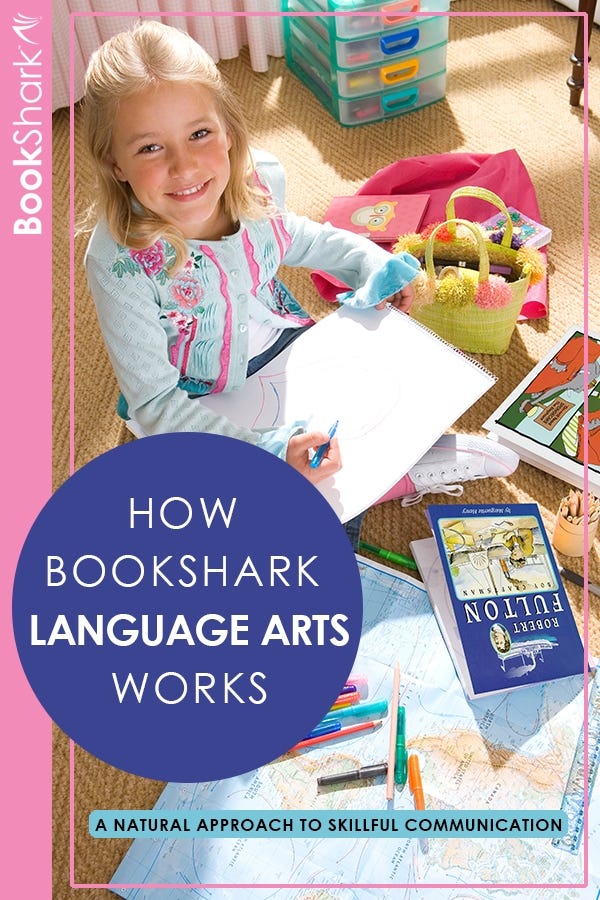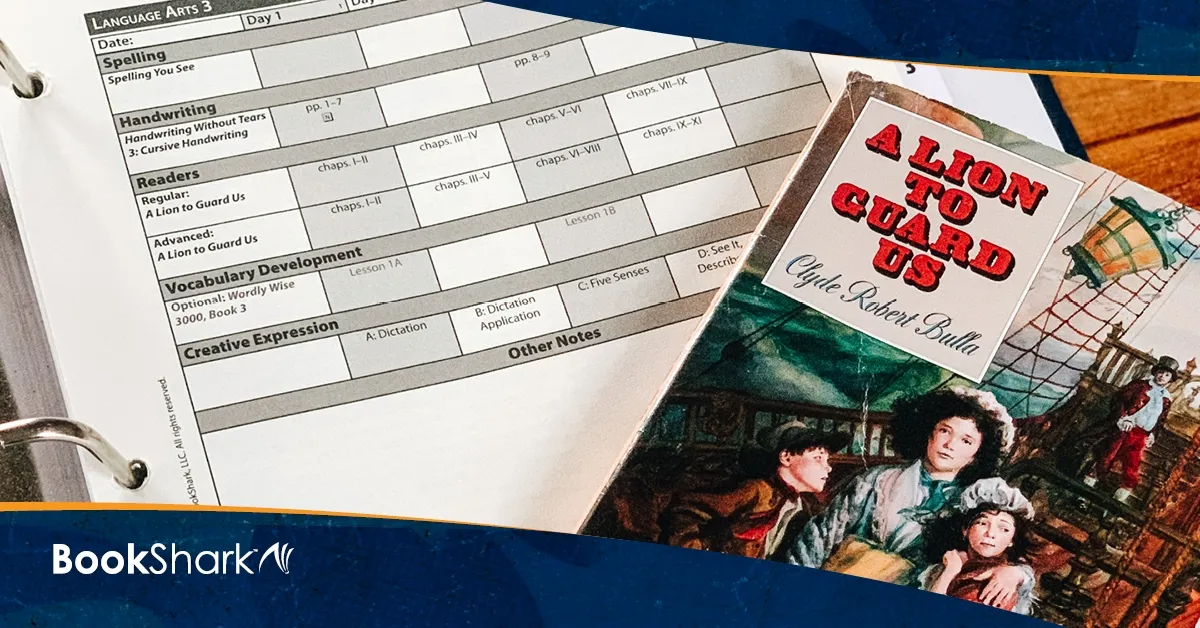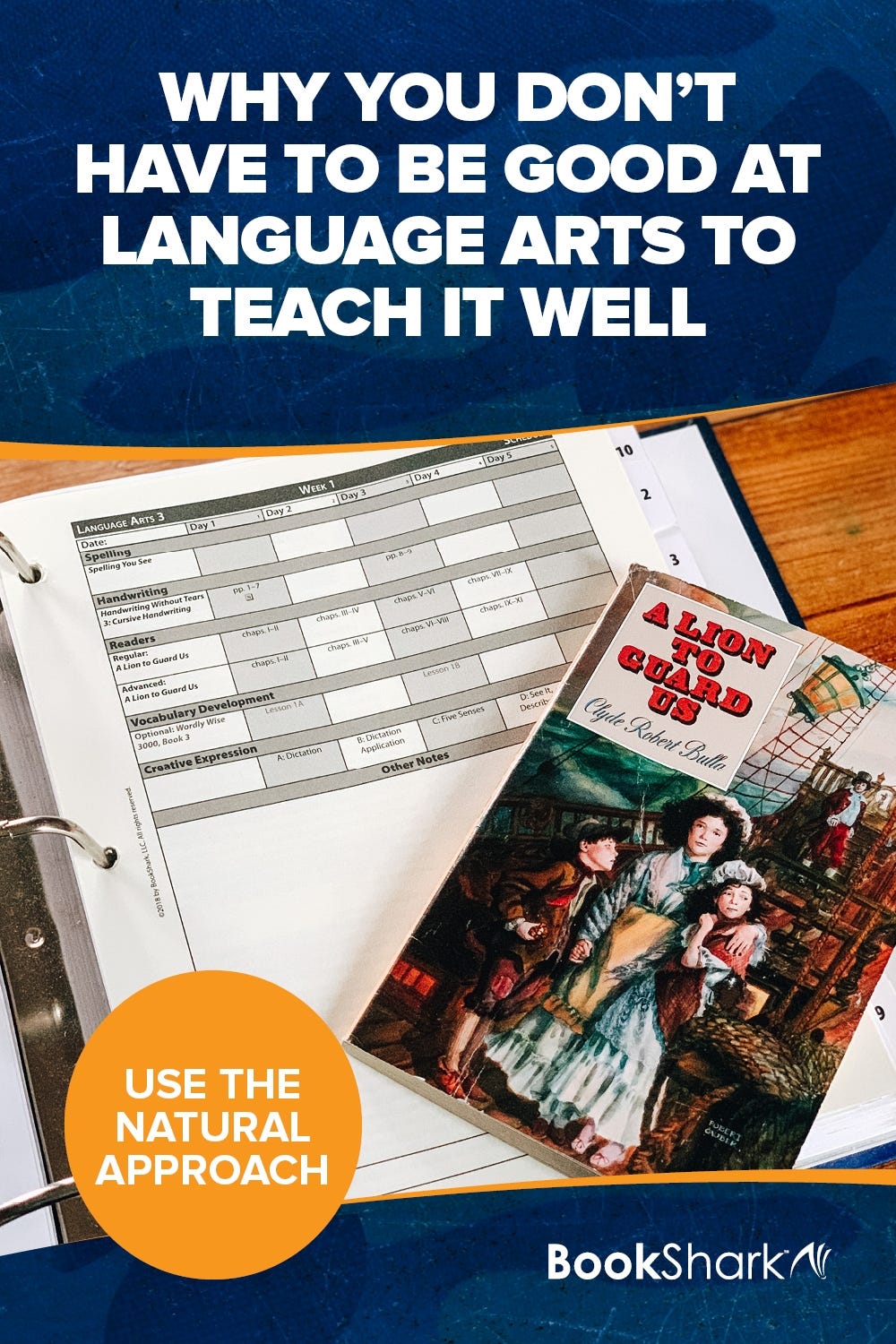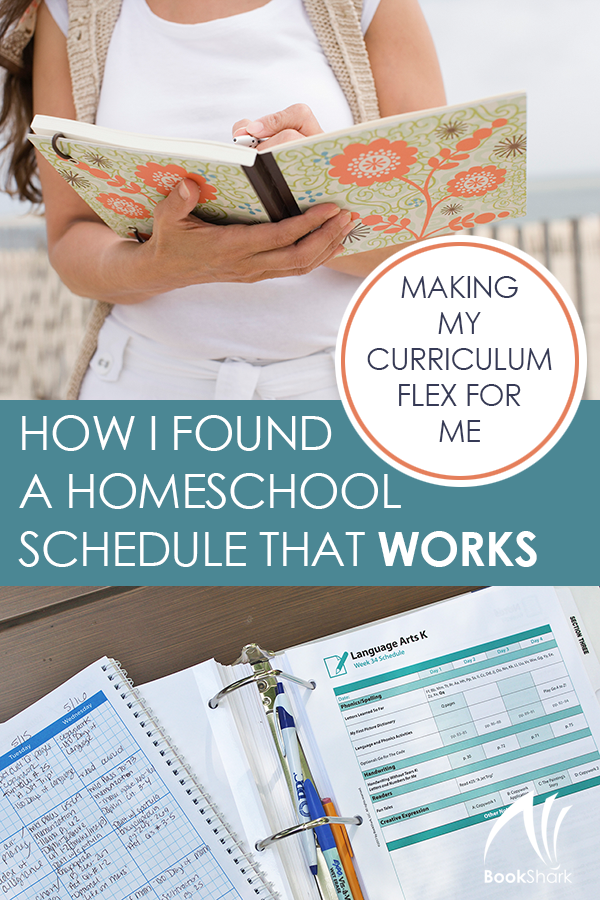What if your kids could learn to write from real-life, published authors? Sounds pretty amazing…and maybe even a little expensive, right? The good news is they can do just that when they learn language arts naturally using copywork and dictation to develop their writing skills. BookShark Language Arts uses this approach.
Tools for Teaching Language Arts Skills
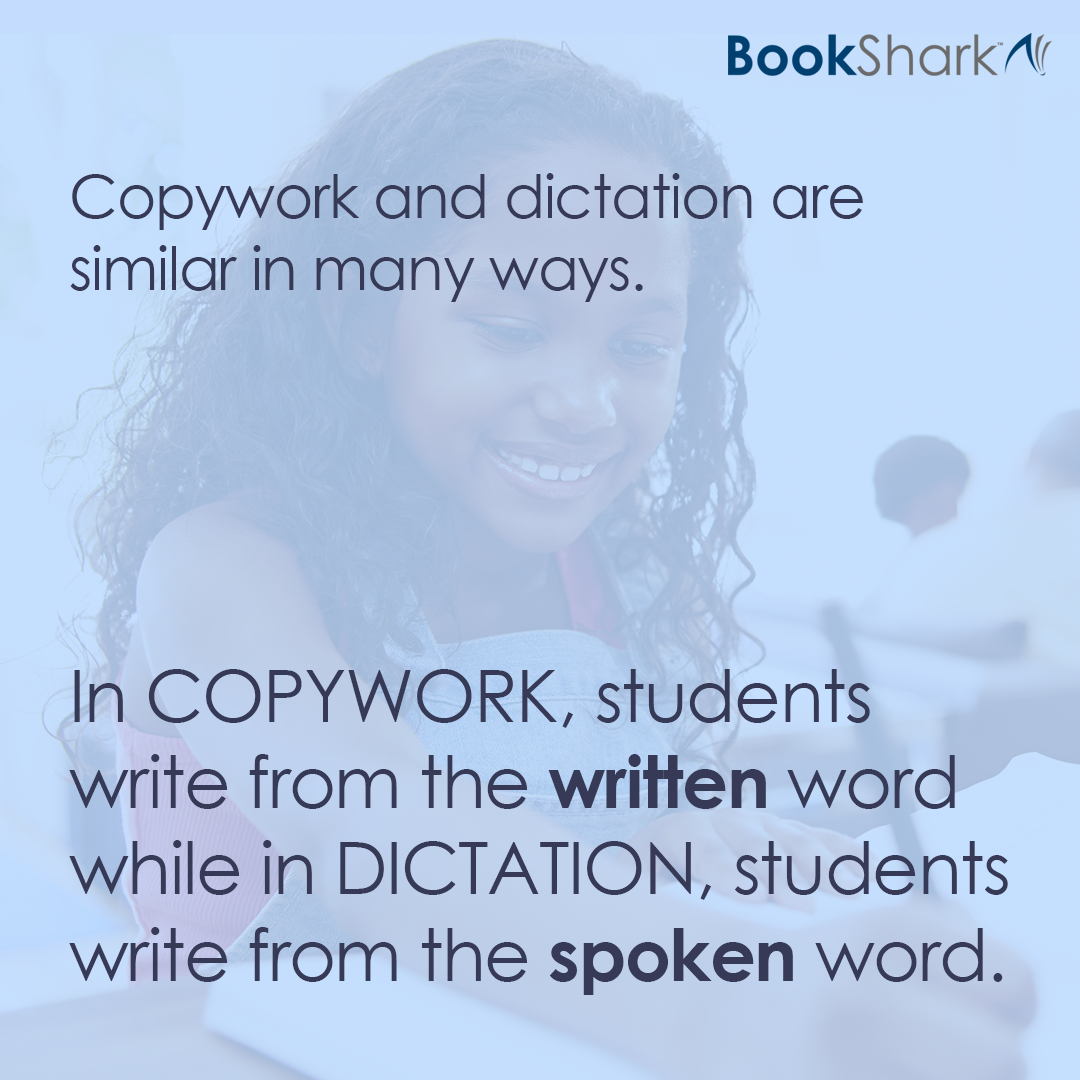
When we incorporate copywork and dictation into language arts, our kids learn to write from those who do it best.
Copywork and dictation are similar in many ways. In copywork, students write from the written word while in dictation, students write from the spoken word.
Don’t let the simplicity fool you though. Both are incredibly effective. And as students progress from copywork to dictation, they start applying what they have learned through copywork. Dictation requires higher-level thinking and writing skills and helps you to evaluate what they really understand.
How to Use Dictation to Teach Language Arts
How do you do dictation? Read a sentence or passage aloud, and have your students write what you are saying. It’s harder than it sounds though, especially when you consider the thinking skills that go into it.
Language Arts Skills
Students are translating what they hear into the written word. That means they have to:
- Remember how to spell the words
- Distinguish between words that sound the same but are spelled differently, and then choose the correct one
- Choose the correct punctuation (and there are a lot of different types of punctuation!)
- Know when to capitalize a word
In other words, as they write from dictation, students are making decisions that will reveal if they are understanding and applying what they have learned in the context of real writing.And while they are doing all of those things, they are also absorbing the rules of grammar and usage, discovering different types of sentence structure, learning new vocabulary, and more, like they do in copywork. They are learning to write from real writers and see the rules of language in action. (And an added bonus: Kids who grow up doing dictation are great note takers in upper level classes!)
BookShark Language Arts integrates dictation exercises into the curriculum. So you don’t have to choose passages. You simply follow the Instructor’s Guide.
Extending the Dictation Lesson
Once kids have written a passage from dictation, you can then use it as a basis for personalizing their language arts lessons. You can teach them what dictation reveals they don’t know or understand yet. But be careful, you don’t want to overwhelm them. You don’t have to do all of these things every time! These are simply possibilities for how you can get the most out of dictation.
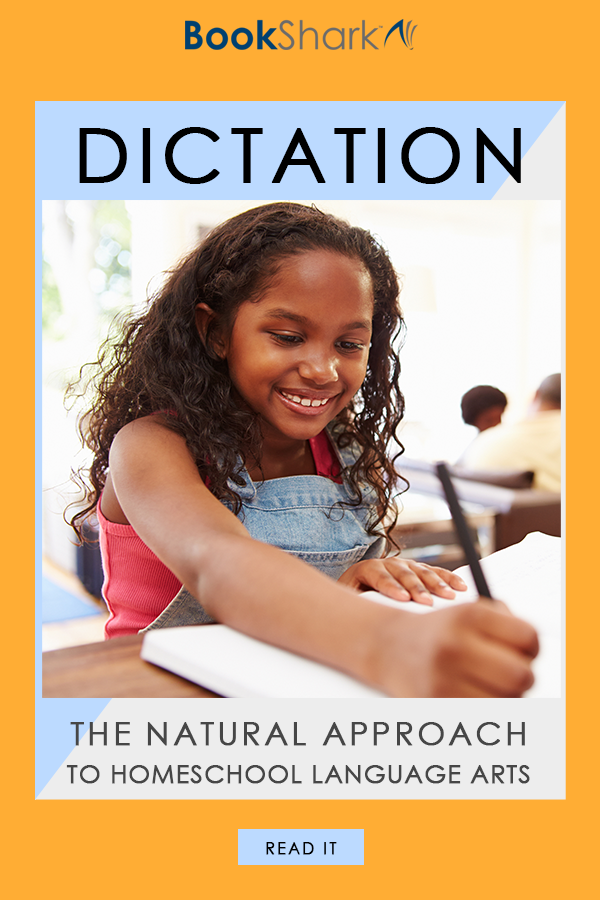
- Create a personalized spelling list or notebook. Have them write down the words they misspelled during dictation. Talk about why it is wrong. Is there a spelling rule they didn’t follow? Students can even categorize frequently missed words that have the same rule.
- Look up a mechanics rule in a reference book. Did they use a semicolon when they should have used a colon? Read the rule together and then simply correct the mistake.
- Allow them to correct their mistakes. A lot of learning happens by going back to correct mistakes on their own. Have them look at the passage you are reading from and correct their own mistakes.
- Let them make their arguments for why their way is also correct. Sometimes in language there is more than one way to write something. Let them share with you why they made the decision to use a certain word or punctuation mark and see if it is a valid alternative.
Why Dictation Teaches Students More Than Exercises in a Textbook
When students do exercises in grammar books, they are seeing a rule used in contrived sentences over and over. Often they do great on the exercises, but then struggle with the concept in their own writing.
Or they will get 100% correct on a spelling test after studying lists of words, but then turn around and spell the word incorrectly when they write it later. Why does this happen?
Because they are learning rules and words apart from the context of writing.
Dictation, however, is the application of all the rules and skills students learn in their language arts studies. When students can successfully do dictation, you know they truly understand what they are learning.
Tips for Beginning Dictation
Like any new skill, it will take time and practice for students to get comfortable with it. You can ease them into dictation so they don’t feel overwhelmed, though.
- Begin dictating just one or two sentences. They can then do the rest as copywork. Slowly increase the amount of dictation as their skills increase. A little done well is better than overloading your student.
- Start with copywork. Assign the sentences or passage as copywork one day, and then use the same passage as dictation the next.
- Let students study the passage they will be writing from dictation before you start. As students become more comfortable with it, simply talk about the passage before you begin.
- When you are starting out, don’t hesitate to repeat the sentences as many times as you need to. Begin by reading the entire passage and have them listen. Then break it down sentence by sentence or phrase by phrase if that works better for your children.
- Exaggerate the pauses. Ask questions to help them along like “What punctuation do we use when there is a pause in the middle of a sentence?”
- Answer their questions. If they ask how to spell a word or what punctuation to use, in the beginning go ahead and answer. It’s a big step in learning to recognize what you don’t know. Then transition them more and more by asking them to write down their best guess.
- Reassure the perfectionist. If you have a perfectionist, remind them that dictation isn’t graded. It’s for pinpointing what they know and don’t know which provides direction for their language arts lessons.
- Be their biggest cheerleader. Let them know that dictation takes time and practice. They will get better and better at it, and you are there to help.
BookShark Language Arts programs help you to teach language arts naturally by choosing dictation passages from the books your kids are already reading, ones that are appropriate for their level. But remember: You are the teacher. You can always modify the lessons in order for your students to experience success and grow as writers at their own pace.
















